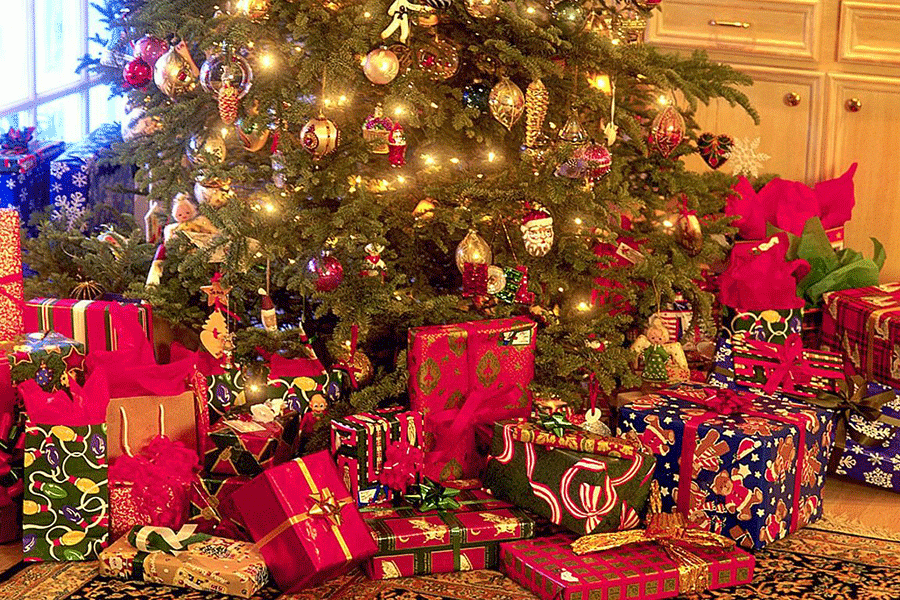Crazy, Wonderful Holiday Traditions
January 4, 2016
In southern Germany, the Bavarian Highlanders fire off hand-held mortars to salute the Christmas holidays. They dress up in straw bales and devil masks to run through the town. The citizens of Greenland enjoy a meal of mattak – raw whale skin and blubber – and kiviak – dead, fermented seal and birds. In Japan, thanks to a 1974 advertising campaign, many families eat at KFC on Christmas Eve.
Some find it the season to volunteer, while others are more than ready to satisfy their need for the new and improved. Some people have parties and others have sit-down dinners, while some stay home alone with Netflix and chill. The Christmas holiday means all sorts of things to all sorts of people.
Around the globe, Christmas is celebrated for many different reasons. But where did it begin? There many different theories on where Christmas began some even begin before Jesus of Nazareth. Most people celebrated the winter solstice when the worst of the winter was behind them and warmer days were on their way.
In Scandinavia the Norse celebrated the yuletide season from December 21 to the end of January to recognize the return of the sun. All the fathers and sons would bring back huge logs and burn them and then feast until the last embers died. Some historians believe this is where the tradition of the yuletide or Christmas log originated.
Mid to late December was a popular time throughout Europe because that is when most of the wine and other such beverages were finally fermented and ready to drink. In addition that was when most herders would slaughter their livestock, so that they wouldn’t have to feed them throughout the rest of the winter. This was about the only time they had fresh meat and beer to drink, which made this time of the year very festive.
The gift-giving part of Christmas is based on Saint Nicholas. In the French version of the story, there were two girls who couldn’t get married because they couldn’t pay their dowry. Saint Nicholas heard of the girls’ problems and, in the middle of the night, threw two bags of money through the window onto the ends of their beds. The girls woke up the next morning and found the miracle money for their marriages. In another legend he threw the money down the chimney and it landed in their stockings, so we’ve hung them up by the chimney ever since.
It wasn’t until the nineteenth century that America fully embraced Christmas and turned it into what it is today, with fat old Santa watching you in your sleep and giving the “good little boys and girls” presents. Some historians believe that the modern Christmas was founded on “The Sketch-Book of Geoffrey Crayon,” a series of stories about the celebration of Christmas. On several occasions in this book, a noble would invite peasants into his home and celebrate Christmas with a large dinner and festivities. Some historians believe this was the beginning of the modern Christmas tradition because of the common foundation of charity and equality.
What do you do for Christmas? East High social studies teacher Jed Bangerter shared the story of his childhood tradition for Christmas:
“So every Christmas, my dad would set up some way to keep us in our rooms, and the rule was that we couldn’t leave our rooms until he rang a bell. Once he rang the bell, we would have to get to the tree as fast as we could and he would be (already) unwrapping presents as fast as he could.”
Mr. Bangerter’s dad made it a game to see if the children could get there fast enough to unwrap any presents.
“One year he put straw bales in the hall, and he put them from the ceiling to the floor, He had them four layers deep, so when we took down the first wall there was another and another. He unwrapped almost every present that year!”
Each of us celebrates Christmas for our own personal reason. From odd foods to wrapping paper races, the holidays means something special to all of us.


